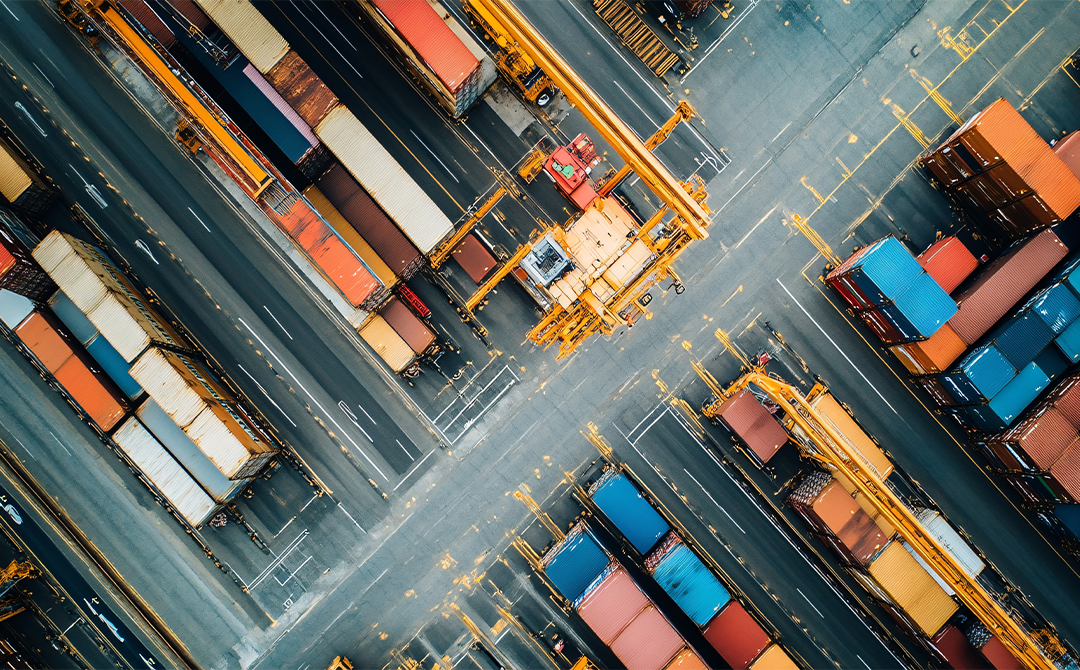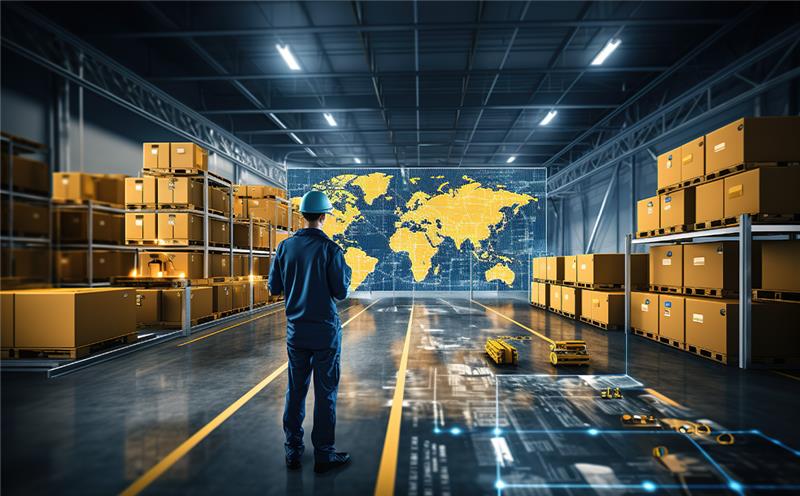
The global market in 2024 is faster, more digital, and more competitive than ever. Customers carry the baton, and demand signals keep flowing into the enterprise from more and more different channels. The current supply chain challenges require innovative capabilities and strategies to deal with uncertainties, improve supply chain resilience and implement holistic solutions to balance costs, services, deliveries, and customer expectations.
Four Supply Chain Challenges Facing the Modern Enterprise

Supply chain leaders need to manage a highly complex supply chain for the global business environment and deal with disruptions to keep the bottom line and top line intact. However, for decades, poor supply chain visibility has suffocated the industry. Here are the four challenges gripping the modern supply chain.
1. Data and Application Silos
Vertical organizations often fly blind. Yes, that is true. Most companies are vertically integrated and use systems such as ERP, TMS, WMS, MRP to manage their functional departments. The functions primarily rely on plans developed within such systems to drive execution, monitoring & control. As a result, critical information such as customer demand, logistics, function-specific supply challenges & backlogs is siloed and invisible to other departments. While function-specific analysis is time-consuming, cross-functional insights are even more challenging and require sifting through large volumes of data. Thus, business unit heads lose sight of the strategic ambitions of the overall supply chain According to a survey by Supply Chain Dive, only 6% of companies believe that they have achieved complete supply chain visibility. The lack of supply chain visibility is overwhelming and keeps on staggering.
2. Lack of Know-Hows, Tools, Technologies to Generate Insights
With the advent of digital data, volume, accessibility, and insights generation through analytics are critical to creating a sustainable supply chain. However, because analytics is not widely adopted, the data is poorly used. The data engineering and analytics capabilities in most supply chains are insufficient. As a result, supply chain leaders often cannot effectively use relevant data at the required speed. They also lack diagnostic and advanced analytics tools/technologies and often fail to understand the nature of use cases or supply chain problems.
3. Lack of Predictive and Prescriptive Capabilities
Digitalization is not enough. As per the Chartered Institute of Procurement & Supply Risk Index’s report, the average annual economic loss caused by major natural disasters around the world is approximately US$211 billion. Supply chain leaders also need to leverage new capabilities to predict market moods, deviation, and unanticipated geopolitical landscape. However, most existing advanced analytics applications cater to solving point problems. There is an acute shortage of capabilities to use prescriptive or simulative simulations or what-if analysis to investigate broader issues in the supply chain and make recommendations. In addition, there are only a few good AI/ML-driven analytics solutions out there that prevent executives from using machine learning and limit the automation of the supply chain.
4. Lack of Off-the-shelf Solutions
Every use case or nature of the problem varies from customer to customer. So off-the-shelf products cannot meet customization and personalization requirements. Regarding the KPIs that businesses want to measure, use cases vary from company to company, making it impossible for off-the-shelf applications to handle. Such rigid solutions put the burden on supply chain leaders to get data in the desired format. Indulgent customizations, choice complexities often lead to value destruction.
Need for an End-to-end Supply Chain Visibility Capabilities through Digital Control Tower
“Gartner reports, 79% of supply chain leaders believe that the internet/platform-based approach is the most critical new business model.” The above four challenges require building a digital control tower with data engineering functions and pipelines on top of a solid data layer. Establishing a simplified data architecture with an automated framework can integrate master data and transactional data sources in a streamlined manner, ensuring the availability of necessary data across multiple silos to obtain accurate real-time visualization of the overall supply chain health. AI/ML-driven analytics and rapid scenario planning can provide speed, consistency, and flexibility to achieve controllable and manageable supply chain functions, thereby helping executives gain a competitive advantage.
Two Critical Elements for an Ideal Supply Chain Control Tower Platform
An ideal Supply Chain Control Tower (SCCT) is a cross-departmental, system-integrated “information hub” that provides end-to-end visibility. There are two key elements to build/implement an ideal SCCT.
1. Real-time Visualization Catering to Different Personas
Executive Insights: An ideal supply chain control tower will provide a bird’s eye view of the overall supply chain health. It will enable the leaders to collect and distribute information, identify risks, and respond strategically.
Execution Insights: SCCT’s state-of-the-art setup caters to the nuanced aspects of the supply chain health for multiple execution persona – analysts or managers at the DC level or fulfillment center to view the various KPIs. It provides them with information to monitor, measure, and manage different aspects of the supply chain, including transportation, inventory movement, and operational activities.
2. Use Case Approach for Autonomous Supply Chain
The ideal supply chain control tower can guide leaders/managers to explore potential use cases and supply chain issues. It will allow them to find the most critical challenges that profoundly impact the overall performance of the supply chain and use advanced analytics, such as machine learning operations, advanced forecasting, or advanced scenario planning. In this way, they can combine use cases with visualization and diagnostic capabilities and automate the supply chain as they mature.

Conclusion: Control Towers are Stepping Stones Towards Autonomous Supply Chain
The Supply Chain Control Tower platform provides complete visibility from high-level monitoring layers to execution details, so the executives can optimize, manage, plan and execute supply chain processes and operations faster and more accurately. The addition of anomaly detection, automated root cause analysis, and response capabilities will further simplify the transition towards a cognitive supply chain control tower.
– – –
Tredence is one of the top data engineering and data analytics companies in the US, Europe, and APAC regions. If you need to implement the supply chain control tower to benefit from improved visibility and efficiency, let us understand your top-of-mind concerns and help you with our unique supply chain analytics services.

AUTHOR - FOLLOW
Hemanth Holla
Senior Manager – Supply Chain
Topic Tags




